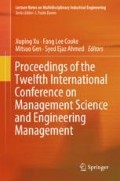Abstract
The comparative advantage theory of international trade states that countries should export commodities for which they have high comparative advantage and import commodities for which they have low comparative advantage. Analyzing the Halal trade flows for Malaysia’s 11 food/food-related commodities from 1991 to 2012, this study finds an interesting development of the standard view of comparative advantage in the emerging Halal export market. It finds that the greater the country’s current comparative advantage in an exported good, the higher the risk of export diversion (one- or two-way causality) between the Halal market and the conventional market with the country’s expansion of Halal exports; while the diversion risk disappears with lower current comparative advantage. Thus, the study suggests that if a country wants to take advantage of the fast-emerging market, it should aim to expand export of commodities with relatively low current comparative advantage but high demand in the emerging market.
Access this chapter
Tax calculation will be finalised at checkout
Purchases are for personal use only
Notes
- 1.
- 2.
Commodities are selected based on export food commodities list published by FAOSTAT and export data provided by Ministry of International Trade and Industry (MITI).
- 3.
Please see Sect. 122.2 for detail of the list.
- 4.
Instead of comparing the value of trace or max-Eigen statistics against critical value, the p-values are observed here and compared to critical value, of 0.05.
- 5.
Since p-value < (none), the null hypothesis is rejected.
- 6.
As noted previously, result from maximum eigenvalue test should be considered when these two tests show a conflicting result.
- 7.
Hydrogenated oil has chi square value of 0.0033 which is lesser than , thus null hypothesis is rejected.
References
Acharya RC (2008) Analysing international trade patterns: comparative advantage for the world’s major economies. J Comp Int Manag 11(2)
Aldrich J (2004) The discovery of comparative advantage. J Hist Econ Thought 26(3):379–399
Barnes J, Kaplinsky R, MM, (2004) Industrial policy in developing economies: developing dynamic comparative advantage in the South African automobile sector. Compet Change 8(2):153–172
Bernhofen DM, Brown JC (2004) A direct test of the theory of comparative advantage: the case of Japan. J Polit Econ 112(1):48–67
Bond EW,Trask K, Wang P (2003) Factor accumulation and trade: dynamic comparative advantage with endogenous physical and human capital. Int Econ Rev 44(3):1041–1060
Costinot A, Donaldson D et al (2013) Comparative advantage and optimal trade policy. Cepr Discussion Papers 130(2)
Deardorff AV (1980) The general validity of the law of comparative advantage. J Polit Econ 88(5):941–957
Engle RF, Granger CW (1987) Co-integration and error correction: representation, estimation, and testing. Econometrica 55(2):251–276
Fajgelbaum P, Grossman G, Helpman E (2011) Income distribution, product quality, and international trade. J Polit Econ 119(4):721–765
Fieler AC (2012) Quality differentiation in international trade: theory and evidence. University of Pennsylvania
Gupta SD (2015) Comparative advantage and competitive advantage: an economics perspective and a synthesis
Hallak JC (2006) Product quality and the direction of trade. J Int Econ 68(1):238–265
Hallak JC (2010) A product-quality view of the linder hypothesis. Soc Sci Electron Publ 92(3):453–466
International Markets Bureau Canada (2011) Global pathfinder report halal food trends market indicator report. Agriculture and Agri-Food Canada
Jaimovich E, Merella V (2012) Quality ladders in a ricardian model of trade with nonhomothetic preferences. J Eur Econ Assoc 10(4):908–937
Jaimovich E, Merella V (2015) Love for quality, comparative advantage, and trade. J Int Econ 97:908–937
Johansen S (1988) Statistical analysis of cointegration vectors. J Econ Dyn Control 12(2):231–254
Kabir S (2015) Growing halal meat demand: does Australia miss out a potential trade opportunity? Econ Pap A J Appl Econ Policy 34(1–2):60C75
Kamaruddin R, Iberahim H, Shabudin A (2012) Willingness to pay for halal logistics: the lifestyle choice. Proc Soc Behav Sci 50:722–729
Levchenko AA, Zhang J (2016) The evolution of comparative advantage: measurement and welfare implications. J Monet Econ 78:96–111
Narayan PK, Smyth R (2006) Female labour force participation, fertility and infant mortality in australia: some empirical evidence from granger causality tests. Appl Econ 38(5):563–572
Nishimizu M, Page JM (1986) Productivity change and dynamic comparative advantage. Rev Econ Stat 68(2):241–247
Nunn N, Trefler D (2014) Chapter 5—domestic institutions as a source of comparative advantage. Elsevier B.V
Redding S (1999) Dynamic comparative advantage and the welfare effects of trade. Oxford Econ Pap 51(1):15–39
Stewart KG (2005) Introduction to applied econometrics. Thomson Brooks/Cole Belmont
Acknowledgements
The research outcome presented in the paper is partially funded by the Halal Ecosystem (HE) Multidisciplinary Platform, Monash University Malaysia.
Author information
Authors and Affiliations
Corresponding author
Editor information
Editors and Affiliations
Rights and permissions
Copyright information
© 2019 Springer International Publishing AG, part of Springer Nature
About this paper
Cite this paper
Kabir, S., Shams, S., Lawrey, R. (2019). Halal Market Emergence and Export Opportunity: The Comparative Advantage Perspective. In: Xu, J., Cooke, F., Gen, M., Ahmed, S. (eds) Proceedings of the Twelfth International Conference on Management Science and Engineering Management. ICMSEM 2018. Lecture Notes on Multidisciplinary Industrial Engineering. Springer, Cham. https://doi.org/10.1007/978-3-319-93351-1_122
Download citation
DOI: https://doi.org/10.1007/978-3-319-93351-1_122
Published:
Publisher Name: Springer, Cham
Print ISBN: 978-3-319-93350-4
Online ISBN: 978-3-319-93351-1
eBook Packages: Intelligent Technologies and RoboticsIntelligent Technologies and Robotics (R0)

